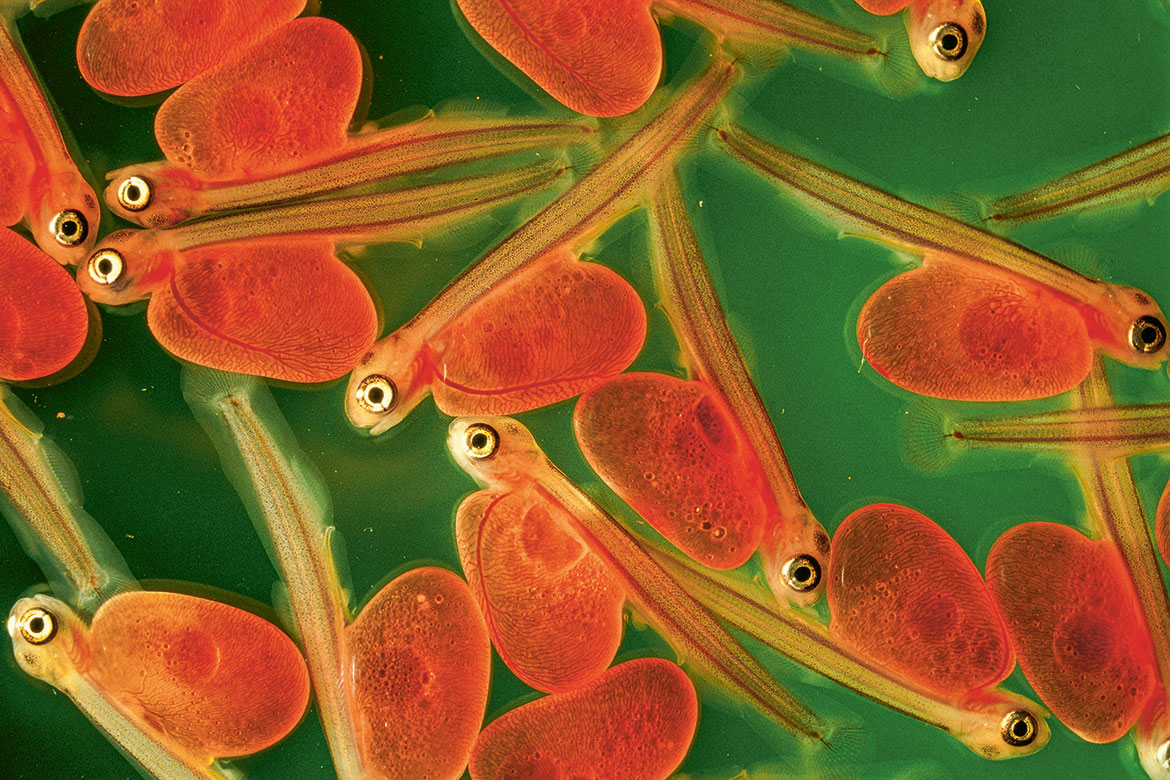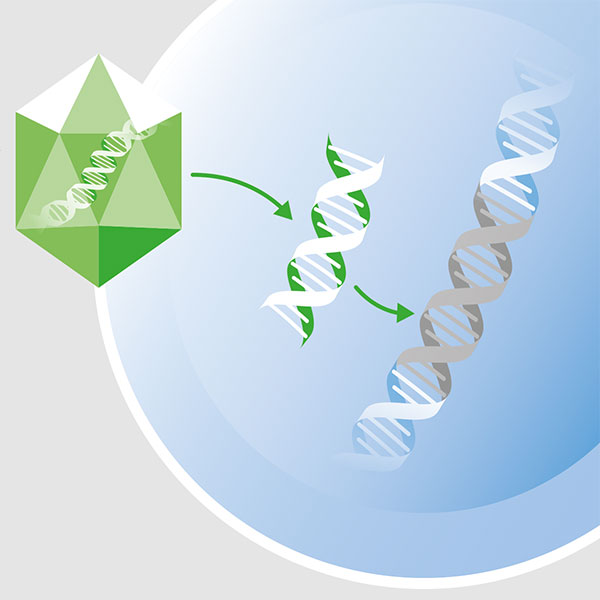EVOLUTION
Gene exchange in fish
Ray-finned fish transfer genes in unusual ways.

A portion of foreign DNA could improve the immune system of these salmon larvae. | Photo: Keystone / Science Photo Library
It’s no secret that bacteria exchange genes with each other. Receiving external DNA helps them to diversify their genetic material and thereby create an advantage in the struggle for survival. But until now, it was a little-known fact that this so-called horizontal gene transfer also occurs in vertebrates. This has now been demonstrated comprehensively by researchers from the universities of Basel and Paris-Saclay, who have been investigating fish belonging to the ray-finned class that makes up more than 95 percent of all living fish species.
The research team examined more than 240 species and found 17 transferred genes. “The proportion of horizontally exchanged genes is small, but extremely interesting nevertheless”, says the lead author Maxime Policarpo. While various transfer mechanisms are known in bacteria, researchers had until now only been able to make assumptions about their presence in fish. One such assumption relies on the fact that fish eggs are fertilised outside the body, for this means that sperm might be able to absorb foreign DNA on its way to fertilising eggs.
But just what benefit could horizontal gene-transfer bring? After all, ray-finned fish reproduce sexually, which in itself ensures genetic diversity. But this new study has shown that several of the genes in question play a role in immune defence, which means that gene-exchange could make the fish more resistant. “New genes have to bring immediate benefits to a species”, says Policarpo. An expansion of their immune repertoire would indeed be just such a benefit. He now wants to investigate whether horizontal gene transfer also occurs in land vertebrates such as birds or mammals.



